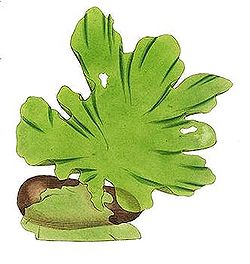| Ulvaria obscura | |
|---|---|
 | |
| Scientific classification | |
| Clade: | Viridiplantae |
| Division: | Chlorophyta |
| Class: | Ulvophyceae |
| Order: | Ulvales |
| Family: | Ulvaceae |
| Genus: | Ulvaria |
| Species: | U. obscura |
| Binomial name | |
| Ulvaria obscura (Kützing) Gayral ex Bliding | |
Ulvaria obscura is an intertidal and subtidal benthic marine algae found in temperate and Arctic ocean waters around the world. [1] [2]